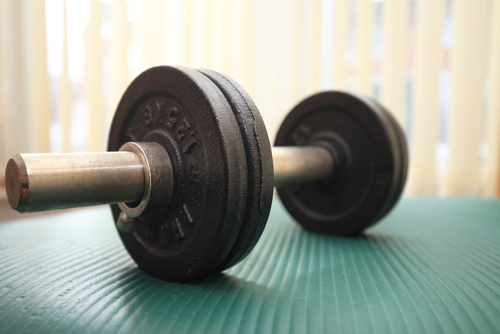Andy writes in a lengthy email on the topics of muscle control and isometrics with a few different questions.
Read it below and then my response to follow…
I’ve enjoyed reading your books and recently purchased the Muscle Control Course. I’m trying to figure out how muscle control can be used with isometrics. My goal is not muscle mass gain but more leanness and muscle density (understanding diet is a major factor). Below are what I’m experimenting with. Would be great to get your thoughts if I’m on the right track per my goal or if you have any suggestions.
For the past few months, I’ve been buying every isometric book I can find. I keep going back to Steve Justa’s chapter on “power isometric aerobics” in Rock Iron Steel. I’ve experimented with 100 rep pulsed (brief contract/relax) isometrics in various positions (for ex deadlift, press, ski pole) using a Exer-genie rope based device (setup for no/little movement). At first the nerves felt a bit fried, but after 8 sessions (1-2 days rest in between) my nervous system recovery is much improved. During the workout, increasing the pulsed intensity can get the heart/breathing going big time. After this pulsed workout there is a mild pumped feeling but the next day the pump is replaced with a slight feeling of leanness.
For muscle control, Maxick is a pretty fascinating character. If his feats are real, do you think his “agonist only” controlled weightlifting was the secret to his strength? If so, did he first master max contraction/relaxation of individual muscles , then gradually add weight in a lift to the point where he could no longer suppress the antagonist muscle relaxation (then practice)?
Per your course I’m starting with the pulsed “flicking” of individual muscles. Even in a few days I seem to be getting much better response in some muscles. I noticed some initial imbalance where I could easily consciously pulse my right hamstring but had some trouble even finding the awareness for the left hamstring. I’ll mix up high rep awareness pulses for some higher intensity contractions (until nearby muscles are not contracted). Note, I don’t currently have any awareness to even twitch my deltoids.
Also, have you read David Bolton’s book “Lost Secrets for a Great Body”? I really enjoyed it, he makes the argument that the Sandow light dumbbell system was perhaps responsible for not only his greek statue physique but the basis of his strength as well. In the Otto Arco/Alan Calvert book provided in your course, a muscle control secret was suggested in a future book. Was curious if you think this light dumbbell routine was the secret?
Any thoughts or suggestions on whether the muscle control and iso training above could be effective for leanness and muscle density would be greatly appreciated.
Maxick’s feats are real at least the majority of them. Plenty of other trustable strongmen saw and confirmed them.
Honestly, I do think he over-hyped the muscle control to some degree. He surely practiced lifting the weights and that practice may have been more than he let on. (We know that was the case for Charles Atlas.)
That being said, Maxick clearly was devoted to muscle control and it worked well for him.
Glad to hear the muscle control is working for you. Some muscles, even from left and right sides, are tricky. It took me a long time before I could flex the lats without the pecs or vice versa. That is to say that what you are experiencing is common.
In Sandow’s case I don’t put much stake in his system. The book was ghostwritten for one and he was a good marketer (unlike the majority of the strongman). Not that his system couldn’t be effective at all, but I don’t think that is how he built his strength.
My feeling is his case is similar to what I mentioned of Maxick in some regards. I think of the light-weight muscle control as being just that. Light weights can help with the control and that’s one thing I demonstrate in the Master Muscle Control videos.
But Sandow was definitely lifting heavy things too.
When he toured, he was doing heavy lifts, supports, and everything involved in his stage show on pretty much a daily basis, sometimes multiple shows per day. To this, he also added the muscle control. But you can’t say that one was responsible for the other.
For your overall question, yes, I think that isometrics and muscle control are good for leanness and muscle density. Muscle control for one allows you to flex harder so that your muscles will feel much denser.
Isometrics also tend to target the non-muscles, i.e. connective tissues quite well as covered in yesterday’s post. These don’t grow in size much.
That being said isometrics can also be effectively used to grow muscle size too. This subject, including the science behind it, is covered well in The Ultimate Isometrics Manual.
To sum up, there are many types of training. There are many types of isometric training alone!
I do not believe there is any one PANACEA of training. I think everything has benefits and drawbacks. Thus, by mixing and matching methods of training and tools, you can get the best of all the benefits while not having the weak links formed by the drawbacks. (Though to be fair, the drawback of this approach is it is more complicated!)

